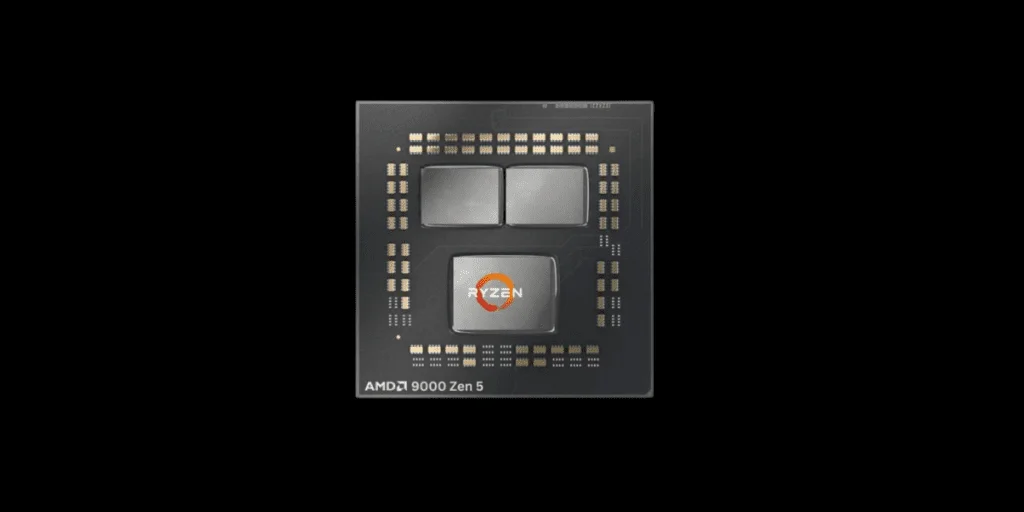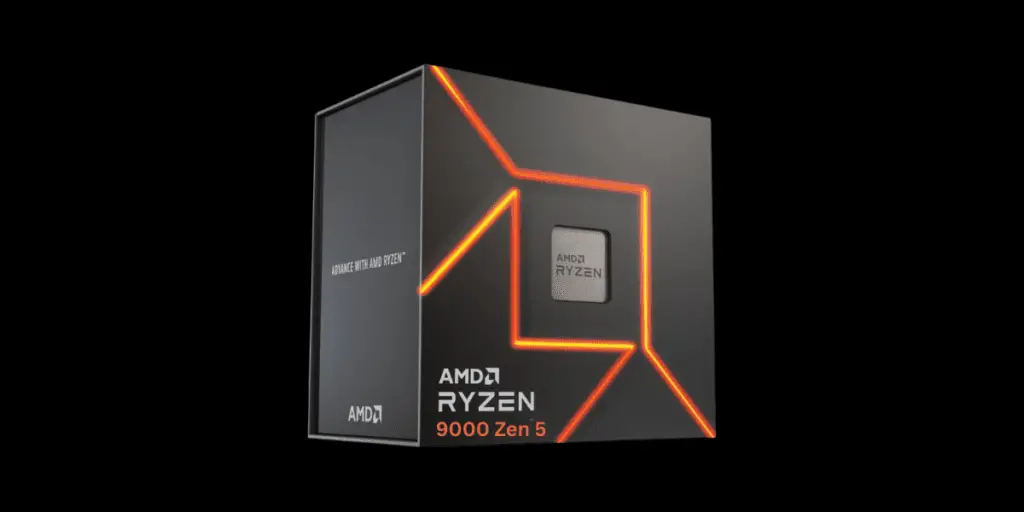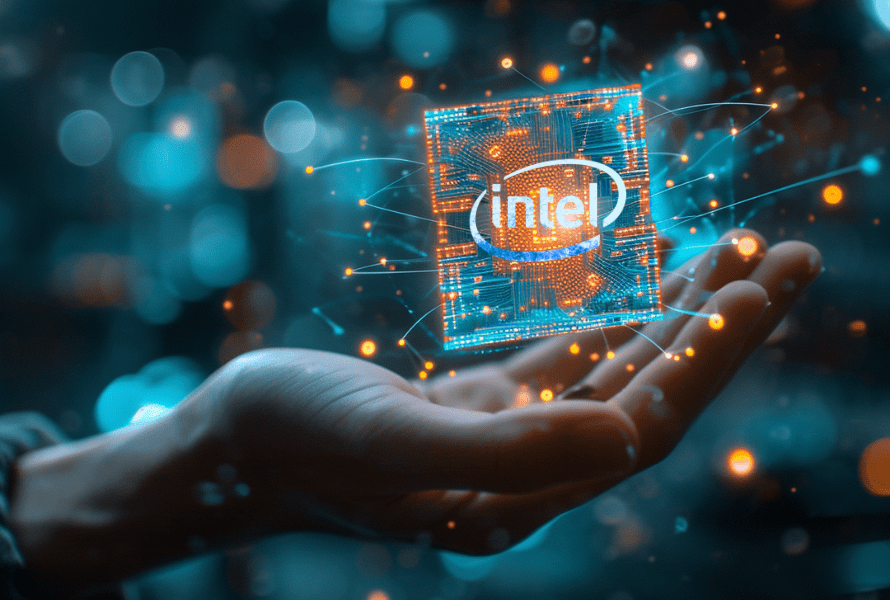AMD is poised to make another monumental stride with its upcoming Ryzen 9000-series “Granite Ridge” desktop CPUs, powered by the highly anticipated Zen 5 architecture.
This new generation of processors is not just a testament to AMD’s relentless pursuit of technological advancement but also sets the stage for head-to-head competition with Intel’s Arrow Lake-S lineup, promising a fierce battle for supremacy in the CPU market.
The latest leaks and rumours have unveiled a wealth of details about these processors, including their launch timeframe, specs, and the innovative features they bring to the table.
As we stand on the cusp of what could be a significant shift in computing power and efficiency, this introduction delves into the implications of AMD’s next-gen CPUs and their potential to redefine the landscape of desktop computing.
AMD Ryzen and Zen Architectures
The AMD Ryzen series and the underlying Zen architectures represent a pivotal chapter in the history of computing, marking AMD’s resurgence as a formidable contender in the CPU market. This journey began in 2017 with the launch of the original Ryzen processors, built on the first-generation Zen architecture.
These processors were AMD’s answer to years of Intel’s dominance, offering competitive performance, multi-threading capabilities, and energy efficiency at compelling price points. The success of Ryzen chips in desktops, laptops, and servers revitalized AMD’s role in the industry and set a new standard for consumer expectations.
Each subsequent Zen architecture iteration brought significant improvements in performance, efficiency, and features. Zen 2, introduced in 2019, shifted to a 7nm manufacturing process, greatly enhancing IPC and energy efficiency while introducing PCIe 4.0 support.
Zen 3, unveiled in 2020, further refined these advancements, offering substantial boosts in IPC, making AMD’s processors highly competitive in both gaming and productivity tasks.

The Zen 4 architecture, powering the Ryzen 7000 series, marked AMD’s transition to a 5nm process technology, further pushing the boundaries of performance and efficiency. It introduced support for DDR5 memory and PCIe 5.0, setting new benchmarks for high-speed computing and gaming experiences.
Now, with the horizon of Zen 5 architecture coming into view, AMD is preparing to leap forward. Zen 5, as rumoured, aims to utilize TSMC’s advanced 4nm/3nm process nodes, which promise even greater improvements in performance and efficiency.
The adoption of a chipset design similar to Zen 4 and the potential integration of big.LITTLE architecture indicates AMD’s continued commitment to innovation.
These advancements not only underscore AMD’s strategy of iterative improvement but also signal its intent to remain at the forefront of the CPU market, challenging competitors and pushing the envelope of what’s possible in desktop computing.
As the Ryzen series continues to evolve, each new generation of Zen architecture cements AMD’s legacy as a pioneer in the industry, driving forward the capabilities of modern computing and redefining what users can expect from their desktop and laptop processors.
Leaked Details on Ryzen 9000
The Ryzen 9000 series is expected to make its debut in the second quarter of this year. This aligns with AMD’s tradition of revealing major updates and new products around that time, setting the stage for an exciting mid-year launch.
The Granite Ridge CPUs are reported to be fabricated using TSMC’s advanced 4nm (“N4”) process technology. This leap to a smaller node is expected to deliver at least a 10% improvement in IPC over the previous generation despite maintaining similar clock speeds.
Such an improvement is pivotal for enhancing overall performance, particularly in demanding computing tasks and gaming. The new chips are said to support DDR5 memory, with speeds reaching up to 6,400 MT/s, ensuring that the processors can take full advantage of the fastest RAM available for lightning-quick data processing.
The inclusion of either RDNA 2 or RDNA 3.5 integrated graphics points towards significant graphics performance onboard, suitable for light gaming and professional graphics tasks.
Leaked details suggest a versatile lineup, with core counts ranging from 6 to 16 cores, catering to a wide array of users from casual enthusiasts to hardcore gamers and professionals.
The Thermal Design Power ratings are expected to range between 65 and 170 watts, indicating AMD’s focus on balancing raw performance with power efficiency.

AMD is upping the ante on cache sizes as well, with up to 64MB of L3 cache and 16MB of L2 cache. These substantial cache amounts are crucial for reducing latency and improving performance in data-intensive applications and multitasking scenarios.
Consistent with AMD’s consumer-friendly approach, the Ryzen 9000 series will continue to use the AM5 socket and remain compatible with existing 600-series motherboards, ensuring an easy upgrade path for current AMD users.
The leaked details of the Ryzen 9000 “Granite Ridge” CPUs paint a picture of a formidable next-generation processor lineup. These advancements promise to push the boundaries of desktop computing performance, setting the stage for an exciting showdown in the CPU market, particularly against Intel’s upcoming Arrow Lake-S lineup.
As always, while leaks provide a glimpse into what might be on the horizon, the true impact and performance of AMD’s Zen 5 architecture will be fully understood once the processors officially hit the market.
Zen 5 Expected Features
Zen 5 is expected to be manufactured using TSMC’s cutting-edge 4nm/3nm process nodes. This transition to even smaller nodes from Zen 4’s 5nm process aims to significantly improve performance and power efficiency.
The smaller node size typically allows for faster transistor speeds and lower power consumption, which could result in CPUs that are both more powerful and more energy-efficient.
One of the most anticipated features of Zen 5 is the potential adoption of a big.LITTLE (or hybrid) architecture, similar to what has been seen in recent mobile processors and Intel’s Alder Lake and Raptor Lake designs.
This architecture combines high-performance cores with high-efficiency cores in the same processor, enabling a dynamic balance between power and performance based on workload demands. Zen 5 could leverage this design to offer significant improvements in multitasking and energy efficiency.
With every new generation, AMD has consistently delivered improvements in IPC, and Zen 5 is expected to continue this trend. Coupled with the advanced manufacturing process, Zen 5 processors are likely to offer at least a 10% improvement in IPC over their predecessors.
While specific clock speeds have not been detailed, the architectural improvements and enhanced manufacturing process should also allow for competitive, if not higher, clock speeds.
Zen 5 is rumoured to support DDR5 memory with even higher speeds, potentially exceeding the 6,400 MT/s limit suggested for the upcoming Ryzen 9000 series. This advancement would benefit applications and games that are sensitive to memory bandwidth and latency, providing a smoother and more responsive experience.
The integration of RDNA 2 or the more advanced RDNA 3.5 graphics in some Zen 5 APUs could bring substantial improvements in on-chip graphics performance, making them suitable for a wider range of gaming and professional applications.
AMD has maintained a strong commitment to backward compatibility, and Zen 5 is expected to continue this tradition. The architecture is reported to be compatible with the AM5 socket, ensuring that users with existing 600-series motherboards can upgrade to Zen 5 processors with a simple BIOS update.
This commitment significantly lowers the barrier to entry for users looking to upgrade, enhancing the longevity and value of their existing systems.
While AMD has not officially confirmed the launch date, leaks suggest that Zen 5 could debut in the latter half of 2024, with a possible unveiling at major industry events like Computex.
This timeframe strategically positions AMD to capitalize on the latest technological advancements and market trends.
Zen 5 represents a major step forward for AMD, promising to bring significant improvements in performance, efficiency, and functionality.
As we edge closer to its anticipated release, the tech community eagerly awaits official details and benchmarks to see how these processors will reshape the computing landscape.
Tech Industry and Consumers
The upcoming release of AMD’s Ryzen 9000 series “Granite Ridge” CPUs, based on the Zen 5 architecture, has the potential to significantly impact both the tech industry and consumers.
These processors, with their advanced features and enhancements, could catalyse shifts in market dynamics, consumer expectations, and the broader technological landscape. Here are several key implications to consider:
For the Tech Industry
- Intensified Competition AMD’s advancements with Zen 5 are set to intensify the competition with Intel, especially as Intel prepares to launch its Arrow Lake-S lineup.
- This rivalry benefits the industry by driving innovation, leading to more powerful, efficient, and feature-rich CPUs. Companies may need to accelerate their own R&D efforts to keep pace, fostering a rapid technological evolution across the sector.
- Innovation in Computing Platforms with Zen 5’s expected improvements in IPC, energy efficiency, and support for cutting-edge memory and graphics, we could see a new wave of computing platforms that are more capable than ever.
- This includes not just traditional desktops and laptops but also innovative form factors like ultra-portable devices, high-performance gaming systems, and advanced workstations for professional applications.
- Ecosystem Expansion AMD’s commitment to backward compatibility with the AM5 socket encourages a stable and expanding ecosystem. Motherboard manufacturers, memory suppliers, and other component makers can benefit from a consistent platform, enabling them to offer a wider range of compatible products and solutions to consumers.
For Consumers
- Enhanced Performance and Efficiency Consumers stand to gain significantly from the improvements in performance and power efficiency that Zen 5 promises.
- This means faster computing experiences, more responsive applications, and the ability to run demanding software and games with ease. Additionally, the improved efficiency could lead to quieter, cooler systems, enhancing user comfort and satisfaction.
- Greater Value and Longevity The compatibility of Zen 5 CPUs with existing AM5 platforms means that consumers who have recently upgraded their systems won’t need to invest in a new motherboard to benefit from the latest processor technologies.
- This backward compatibility ensures that users can extend the lifespan of their current systems, offering greater value and reducing the need for frequent upgrades.
- Broadened Access to High-Performance Computing with Zen 5’s advancements, high-performance computing becomes more accessible to a broader audience. This democratization of technology enables more consumers to engage in high-end gaming, content creation, and data-intensive applications, fostering creativity and productivity.
- Impact on Software Development The capabilities of Zen 5 processors also influence software development, encouraging developers to create more resource-intensive applications and games that leverage the increased power and efficiency of these CPUs. This could result in richer, more immersive experiences for users.
The release of AMD’s Zen 5 architecture represents more than just a step forward in processor technology; it signifies a potential turning point in how we interact with our devices and what we expect from them.

As AMD and Intel continue to push the boundaries of what’s possible, the ultimate winners are the consumers and the tech industry at large, which will benefit from the relentless drive towards innovation, performance, and efficiency.
Final Thoughts
As we edge closer to the anticipated unveiling and launch of AMD’s Ryzen 9000 series “Granite Ridge” CPUs powered by the Zen 5 architecture, the tech community is abuzz with excitement and speculation.
The leaks and reports painting a picture of what to expect from these next-gen processors have set high expectations, promising significant leaps in performance, efficiency, and technology. Here are some final thoughts and speculations on the impact and future prospects of Zen 5 and the broader CPU market.
Zen 5 could represent an inflexion point for AMD and the CPU industry as a whole. With its advanced manufacturing process, the potential is big. With LITTLE architecture adoption and significant IPC improvements, Zen 5 is poised to redefine performance standards across the board.
If AMD delivers on these expectations, it could solidify its position as a leader in the processor market, challenging Intel’s dominance more forcefully than ever before.
The advancements that Zen 5 brings could have far-reaching implications for the future of both desktop and mobile computing.
We might see a new era of ultra-efficient. These high-performance computing devices can handle increasingly complex tasks without compromising on power consumption or thermal management. This could open up new possibilities for portable gaming, on-the-go content creation, and more immersive AR/VR experiences.
AMD’s Zen 5 launch will undoubtedly have a ripple effect on the competitive landscape, pushing Intel and other competitors to accelerate their own innovations.
This heightened competition is likely to spur faster advancements in processor technology, benefiting consumers with better performance, lower prices, and more choice.
It will be interesting to see how Intel responds with its own roadmap and whether we’ll witness a new phase of leapfrogging innovations between these tech giants.
For consumers, the arrival of Zen 5 promises not just enhanced computing capabilities but also better value and longevity for their investments in technology.
AMD’s commitment to backward compatibility means that many users could upgrade to Zen 5 without needing to overhaul their entire system, making cutting-edge performance more accessible to a wider audience.
Looking beyond the immediate horizon, the technologies and architectural innovations introduced with Zen 5 could pave the way for even more groundbreaking developments in computing. These could include further integration of AI and machine learning directly into CPUs, more sophisticated hybrid architectures, and even greater strides in quantum-resistant cryptographic computing.
While speculation and anticipation build around the Ryzen 9000 series and Zen 5 architecture, it’s clear that AMD is pushing the envelope of what’s possible in CPU technology.
As we await official announcements and the chance to see these processors in action, the potential impact on the tech industry, consumers, and the future of computing is both exciting and profound.
Regardless of the final details, one thing is certain: the CPU market is heading into an era of intensified innovation and competition, promising a new chapter of technological advancements that will redefine computing as we know it.


